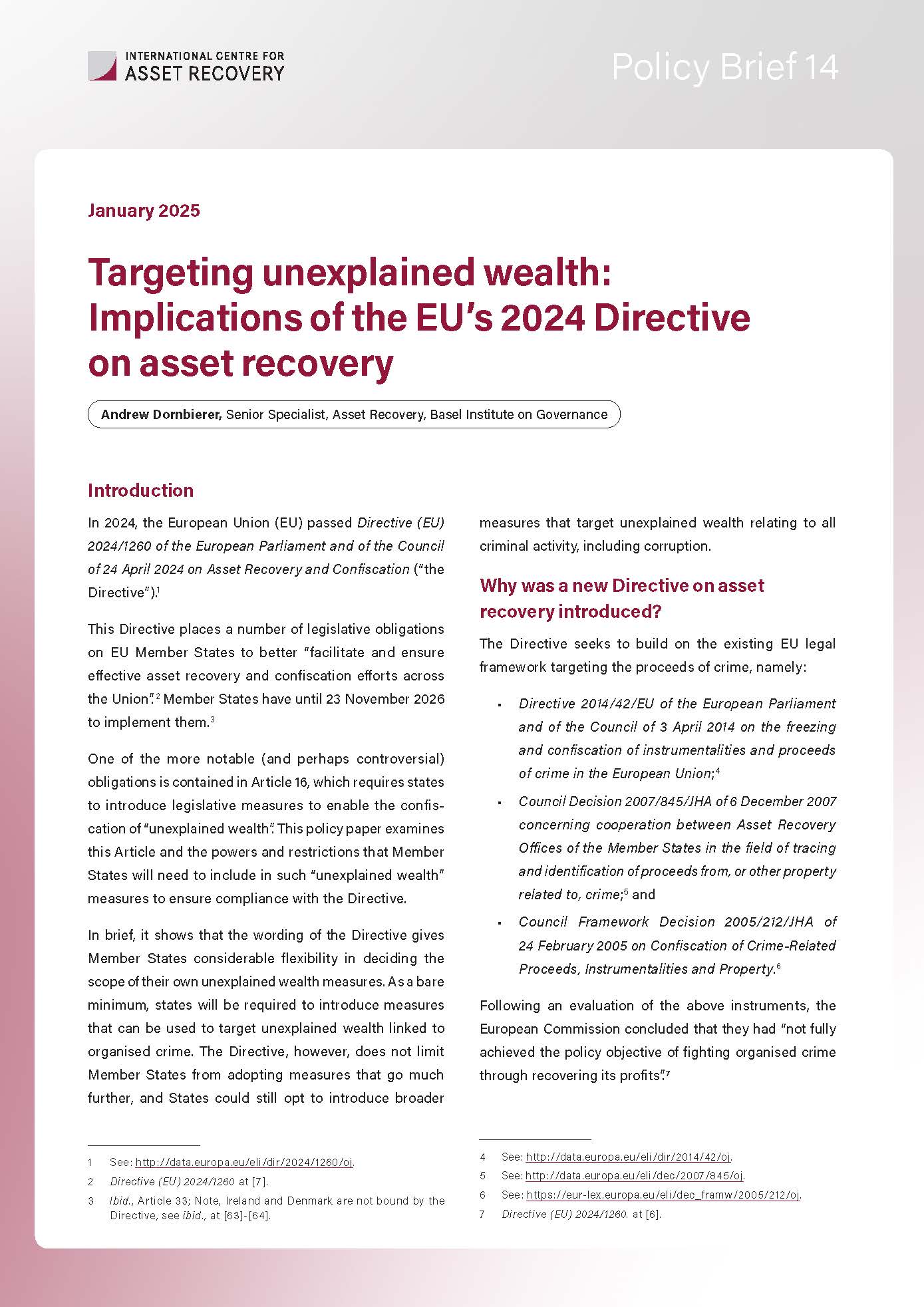Policy Brief 14: Targeting unexplained wealth: Implications of the EU’s 2024 Directive on asset recovery
Keywords:
Asset recovery, Illicit enrichment, unexplained wealth, European Union, legislationAbstract
The European Union’s 2024 Directive on Asset Recovery and Confiscation obliges Member States to, among other things, introduce legislative measures to enable the confiscation of “unexplained wealth”.
This policy paper examines Article 16, which contains this obligation, and the powers and restrictions that Member States will need to include in such “unexplained wealth” measures to ensure compliance with the Directive.
In brief, the Directive gives legislators in EU Member States flexibility to decide the scope of their own unexplained wealth measures. At a minimum, they must introduce measures that can be used to target unexplained wealth linked to organised crime.
Member States could, however, adopt broader measures that target unexplained wealth relating to all criminal activity, including corruption.
About this Policy BriefThis publication is part of the Basel Institute on Governance Policy Brief series, ISSN 2624-9669.
You may freely share or republish it under a Creative Commons BY-NC-ND 4.0 licence. Suggested citation: Dornbierer, Andrew. 2024. ‘Targeting unexplained wealth: Implications of the EU’s 2024 Directive on asset recovery.’ Policy Brief 14, Basel Institute on Governance. Available at: baselgovernance.org/pb-14.
This is a publication of the International Centre for Asset Recovery (ICAR) at the Basel Institute on Governance. ICAR receives core funding from the Governments of Jersey, Liechtenstein, Norway, Switzerland and the UK.

Downloads
Published
How to Cite
Issue
Section
License

This work is licensed under a Creative Commons Attribution-NonCommercial-NoDerivatives 4.0 International License.

